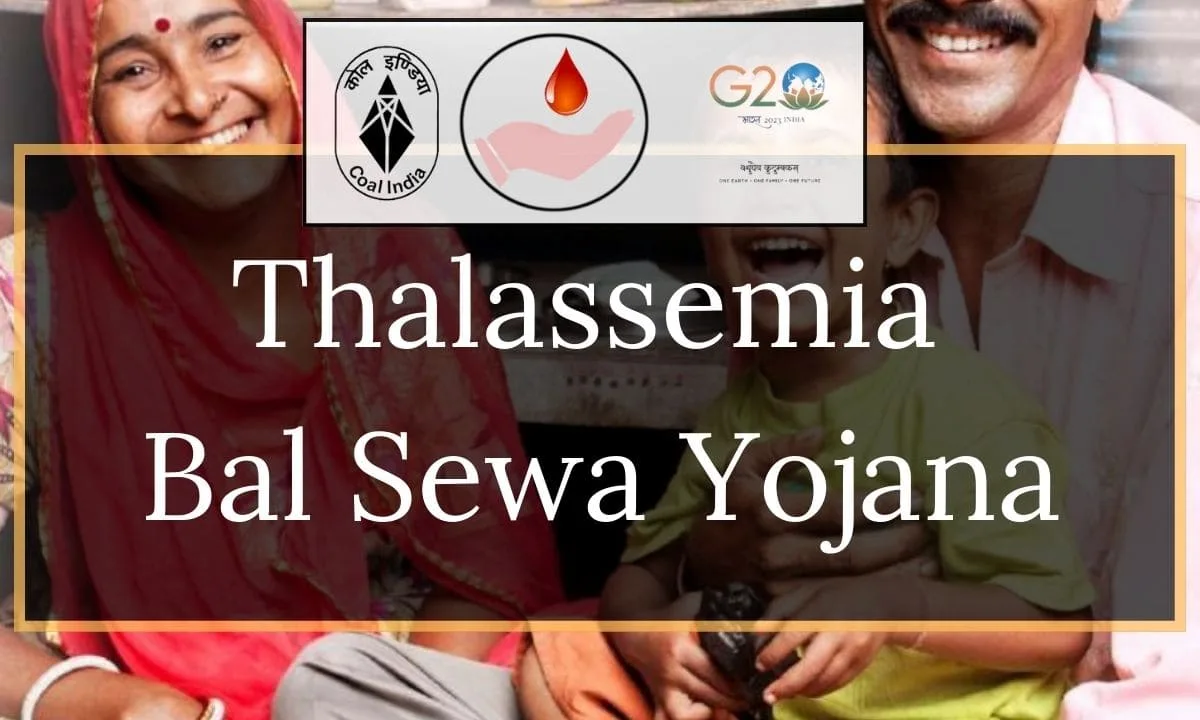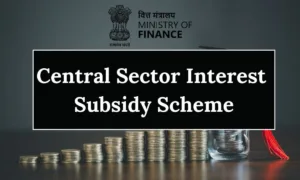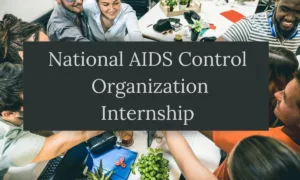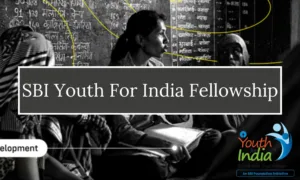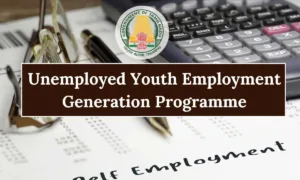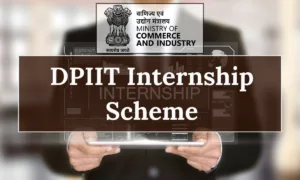Thalassemia and Aplastic Anaemia are two significant hematological disorders that pose a considerable health challenge in India. Both disorders necessitate comprehensive public health strategies, including genetic counseling, awareness campaigns, and accessible medical facilities for early diagnosis and management. Addressing these challenges, Coal India, under the Ministry of Health and Family Welfare launched the Thalassemia Bal Sewa Yojana in 2017. In this article, we are going to talk about the Thalassemia Bal Sewa Yojana in detail. If you want to know about the scheme in detail, keep reading the article till the end.
What is Thalassemia Bal Sewa Yojana?
Thalassemia constitutes a challenging genetic blood disorder necessitating ongoing, regular blood transfusions and other costly medical interventions for sustained survival. The healthcare system bears a substantial load, with over 10,000 Thalassemic children being born annually in India. This places a significant strain on healthcare resources and imposes considerable emotional, psychological, and economic challenges on affected families, particularly those hailing from rural and economically disadvantaged backgrounds.
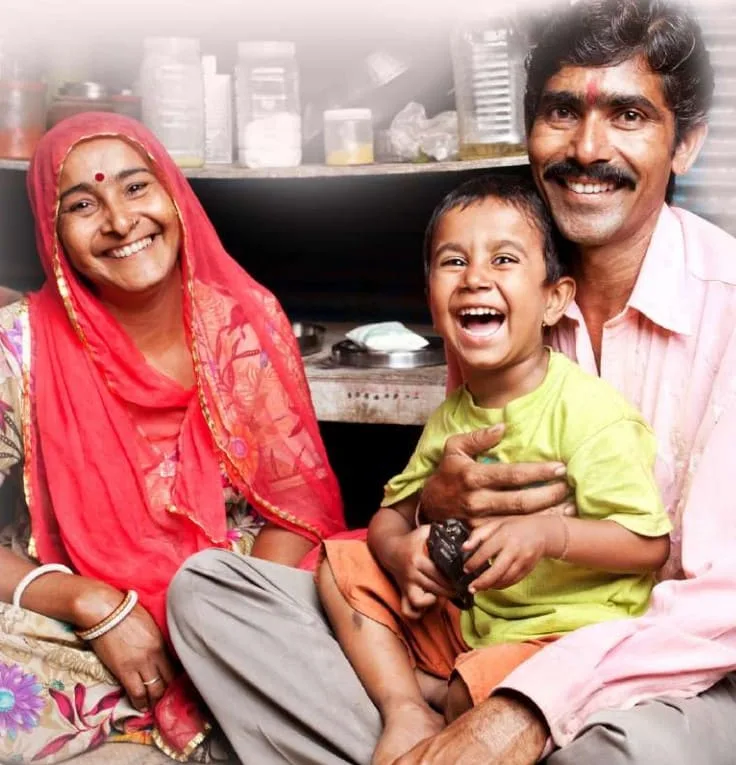
Thalassemia Bal Sewa Yojana is an initiative by Coal India under the Ministry of Health and Family Welfare. It was launched in 2017 with a unique CSR initiative supporting the treatment of children suffering from Thalassemia and Aplastic Anemia. Under this scheme, financial assistance of up to Rs 10 Lakh will be provided to eligible patients. This bone marrow transplant will take place in 10 empanelled hospitals in India. Till now, 356 bone marrow transplants for Thalassemia patients successfully completed under the Thalassemia Bal Sewa Yojana. (Phase 1 – 139 transplants, Phase 2 – 217 transplants).
Please Note: The scheme now extends coverage to patients with Aplastic Anemia and those in need of a Matched Unrelated Donor (MUD).
| Thalassemia Bal Sewa Yojana 2023 Key Highlights | |
| Thalassemia Bal Sewa Yojana Launch Date | 2017 |
| Thalassemia Bal Sewa Yojana Official Website | TBSY Official Website |
| Thalassemia Bal Sewa Yojana Objective | To provide financial assistance for the treatment of children suffering from Thalassemia and Aplastic anemia. |
| Thalassemia Bal Sewa Yojana Incentive Amount | Upto 10 Lakh Rupees |
| Thalassemia Bal Sewa Yojana Beneficiaries | Children suffering from Thalassemia and Aplastic anemia. |
| Thalassemia Bal Sewa Yojana Age Limit | 12 to 18 Years of age |
| Thalassemia Bal Sewa Yojana under which Ministry | Ministry of Health and Family Welfare. |
| Thalassemia Bal Sewa Yojana No. of Beneficiaries | 356 ( as of 2023) |
| Thalassemia Bal Sewa Yojana No. of Empanelled Hospitals | 10 |
| Thalassemia Bal Sewa Yojana Helpline Number | 9871445595, 011-41827334 |
What are Thalassemia and Aplastic Anaemia?
Thalassemia is a genetic blood disorder characterized by abnormal hemoglobin production, leading to anemia and other complications. India bears a substantial burden of thalassemia, with a high prevalence of carriers and affected individuals, especially in regions with a high prevalence of consanguineous marriages. Efforts have been made to increase awareness, carrier screening, and prenatal testing to mitigate the impact of thalassemia on affected families.
On the other hand, Aplastic Anaemia is a rare but serious condition where the bone marrow fails to produce an adequate amount of blood cells. While the exact prevalence is challenging to determine due to underreporting and limited healthcare access, Aplastic Anaemia affects a notable number of individuals in India.
Thalassemia Bal Sewa Yojana Objective
The prime objective of the Thalassemia Bal Sewa Yojana is to provide financial assistance of up to Rs 10 Lakh to eligible patients suffering from Thalassemia and Aplastic Anemia.
This scheme has been launched by the Ministry of Health and Family Welfare so that people suffering from thalassemia. It is now open to people from patients with Aplastic Anemia and those in need of a Matched Unrelated Donor (MUD).
Thalassemia Bal Sewa Yojana in News | What’s New?
May 08, 2023: Phase 3 of Thalassemia Bal Sewa Yojana launched
- Dr. Bharati Pravin Pawar, the Union Minister of State for Health and Family Welfare, inaugurated the third phase of the Thalassemia Bal Sewa Yojana (TBSY) by the Health Ministry.
- The Thalassemia Bal Sewa Yojana Portal was also unveiled during the event. The Coal India CSR-funded Hematopoietic Stem Cell Transplant (HSCT) program provides a unique opportunity for a one-time cure to underprivileged Thalassemia patients with a matched sibling donor but lacking financial resources.
- To date, the program has successfully completed 356 bone marrow transplants for Thalassemia patients across ten accredited hospitals in India during its first two phases.
- Dr. Bharati Pravin Pawar emphasized the importance of disease screening, awareness, counseling, and expanded treatment facilities for blood disorders. She called for a multi-stakeholder approach to mobilize national support and congratulated Coal India Limited and Thalassemic India for their collaboration on the third phase of TBSY.
- The Standard Treatment Workflow for Sickle Cell Disease, developed by the Indian Council of Medical Research (ICMR), was also released during the event. Shri Rajesh Bhushan highlighted the need for a health systems approach and counseling under TBSY, and Shri Anil Kumar Jha termed the third phase inauguration as a crucial milestone toward eradicating the disease.
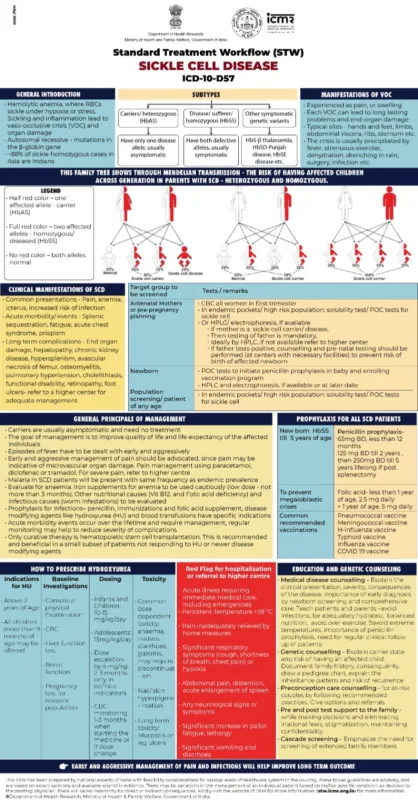
- Dr. Rajiv Bahl stressed the preventability of Thalassemia through early screening and treatment and discussed ICMR’s efforts to increase capacity for bone marrow transplants.
- The third phase of TBSY will continue providing financial assistance for Hematopoietic Stem Cell Transplants, benefiting underprivileged Thalassemia and aplastic anemia patients.
- A web portal has been launched to facilitate online applications for the scheme, offering real-time tracking of application progress. The initiative is recognized as a successful CSR effort by Coal India Limited, making a tangible impact on the lives of thalassemia patients and their families. The hope is that the third phase will further contribute to building a healthier and more equitable society.
Definition of CSR:
Corporate Social Responsibility (CSR) is a business philosophy urging companies worldwide to move beyond a narrow focus on financial gains and wealth accumulation, encouraging a commitment to sustainable development.
CSR Activities:
Companies are expected to invest their profits in areas like education, poverty alleviation, gender equality, and hunger as part of CSR compliance.
Notably, during the COVID-19 outbreak, the Ministry of Corporate Affairs has declared that companies’ expenditures to combat the pandemic will be recognized as valid CSR activities.
CSR in India:
India has a rich tradition of CSR rooted in philanthropy, dating back to ancient times.
Historical Influences:
Influential figures like Chanakya (Kautilya), associated with Mauryan Imperialism, emphasized the importance of ethical practices in commercial activities.
Indian scriptures consistently underscore the significance of sharing business earnings with deprived segments of society.
Modern Indian CSR Perspective:
Mahatma Gandhi’s “Trusteeship Theory” introduced a new dimension to CSR in modern India.
According to this theory, businessmen are considered trustees of trusts responsible for public welfare.
Summary:
CSR advocates a broader business focus on sustainable development and societal well-being. India’s CSR tradition, deeply rooted in philanthropy, draws inspiration from historical figures like Chanakya and is modernized by concepts like Mahatma Gandhi’s “Trusteeship Theory.” The adaptability of CSR is evident in its recognition of pandemic-related expenditures as valid CSR activities during the COVID-19 crisis.
Thalassemia Bal Sewa Yojana Eligibility Criteria
In order to apply for the Thalassemia Bal Sewa Yojana, you must adhere to the eligibility regarding the scheme. There will be general criteria and clinical criteria for each of the diseases.
Eligibility Requirements for Thalassemia
General Conditions:
- The patient must be 12 years old or younger.
- The annual family income of the patient should not exceed Rs. 8 lakhs.
Clinical Criteria:
- The patient must have Thalassemia that requires regular blood transfusions.
- The patient should possess a 100% HLA-matched sibling donor, with a minimum matching ratio of 6/6.
- The patient must not fall into the Class IIIB category, and the size of the patient’s liver should be less than 5 cm below the costal margin.
Eligibility Criteria for Thalassemia with Matched Unrelated Donor (MUD):
General Requirements:
- The patient should be 12 years old or younger.
- The annual family income of the patient should not exceed Rs. 8 lakhs.
Clinical Criteria:
- The patient must have Thalassemia requiring regular blood transfusions.
- The patient should have a 100% HLA match from an unrelated donor.
- The patient must not belong to the Class IIIB category, and the size of the patient’s liver should be less than 5 cm below the costal margin.
Eligibility Criteria for Aplastic Anemia:
General Requirements:
- The patient should be 18 years old or younger.
- The annual family income of the patient should not exceed Rs. 8 lakhs.
Clinical Criteria:
- The patient must be diagnosed with severe aplastic anemia, as confirmed by a bone marrow examination conducted at one of the BMT centers.
- A fully matched 6/6 HLA-related donor is required.
- Essential tests to rule out inherited bone marrow failure syndromes must be conducted.
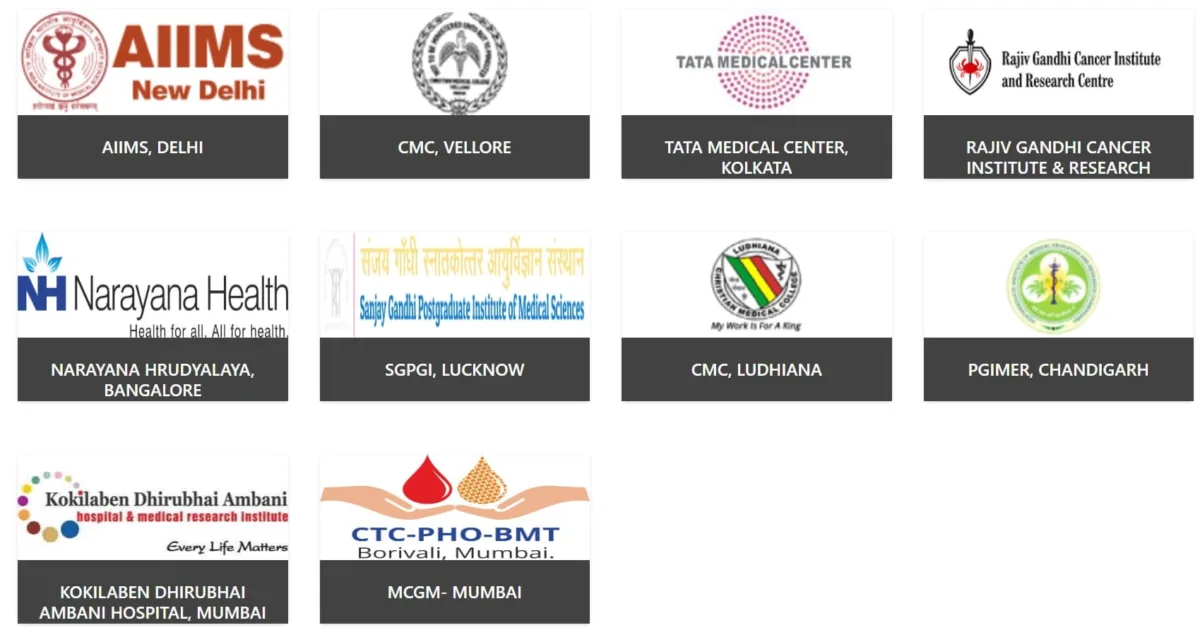
Thalassemia Bal Sewa Yojana Documents Required
In order to take advantage of the scheme, you must have the required documents that will make you eligible for the same. There may be different documents asked by the authority to authenticate your application, however, there are some common documents that will be definitely needed at the time of applying for the scheme
- Resident Proof
- Birth Certificate/Age Proof
- Income Certificate
- Patient Thalassemia Details
- Patient Donor Details ( If applicable)
Please note that all the required documents and details will be provided to you by the officials only, it is advised to call Thalassemic India Centre to know the details. Please call 9871445595, 011-41827334 for further details on this.
Thalassemia Bal Sewa Yojana Empanelled Hospitals
The program has enlisted the services of ten well-established hospitals across India, including
| Thalassemia Bal Sewa Yojana Empanelled Hospitals | |
| S.No | Name of the Hospitals |
| 1 | AIIMS in New Delhi |
| 2 | CMC Vellore, |
| 3 | Kokilaben Dhirubhai Ambani Hospital in Mumbai, |
| 4 | MCGM Hospital in Mumbai, |
| 5 | PGIMER in Chandigarh, |
| 6 | Rajiv Gandhi Cancer Institute in New Delhi, |
| 7 | SGPGI in Lucknow, |
| 8 | Narayana Hrudayalaya in Bangalore, |
| 9 | CMC in Ludhiana, |
| 10 | Tata Medical Centre in Kolkata, |
Thalassemia Bal Sewa Yojana Process Flow Chart
In order to apply for the Thalassemia Bal Sewa Yojana, you need to follow the given process flow chart.
- Thorough detection of Thalassemia is the initial step.
- Ensure Human Leukocyte Antigen (HLA) matching with a suitable donor.
- Confirm that all eligibility criteria are met, including age, income, and clinical requirements.
- Submit the application on the TBSY portal, Thalassemic India, the respective hospital, or Coal India Limited (CIL) and its subsidiaries.
- Thalassemics India will scrutinize the submitted applications.
- Forward approved applications to the designated hospital, with intimation to the patient.
- Obtain approval from the Ministry of Health & Family Welfare, Government of India.
- The application undergoes examination and receives recommendations from a screening committee.
- Applications completed in all respects are sent to the screening committee.
- If any documents are lacking, patients are informed to submit the required documents.
- Patients contact the hospital regarding the transplant process.
- The transplant is scheduled as per the hospital’s plan.
- The application process is concluded after the successful completion of the transplant.
Thalassemia Bal Sewa Yojana Application Process (Online)
This step-by-step process ensures a systematic and comprehensive approach to applying for the Thalassemia Bal Sewa Yojana.
- Visit the Online Web Portal of Thalassemia Bal Sewa Yojana.
- After that, click “Patient Login”. A new page will open where you will have an option to register.
- On the new page, you will get two options “New Patient Registration” or “Registered Patient Login”
- If you are new, you have to click on “New Patient Registration”. After clicking on that a new registration form will open where you have to provide the Patient’s Name, father’s name, Sex, ABHA ID, Email ID, and Family Annual Income.
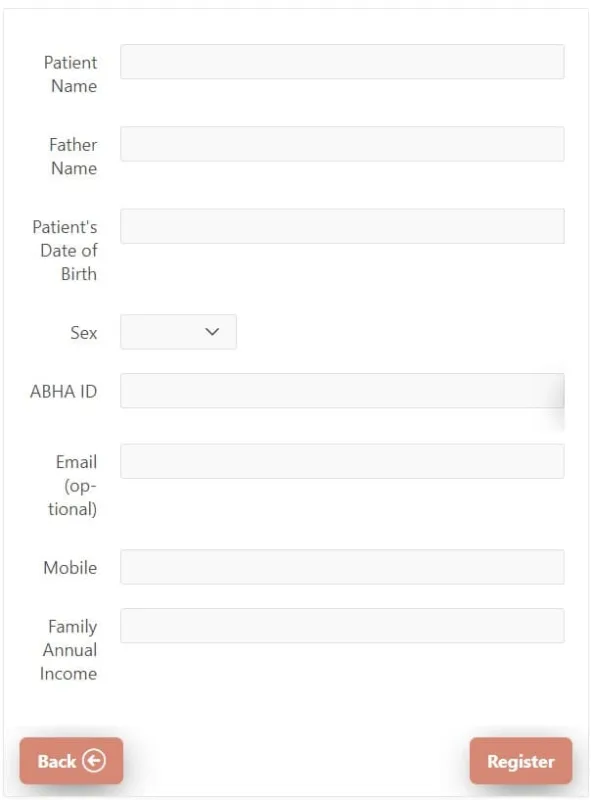
- Click on the “Submit” button
- After following that, you will be registered in the portal.
- After registering on the portal, you have to again visit the portal and click on “Registered Patient Login”.
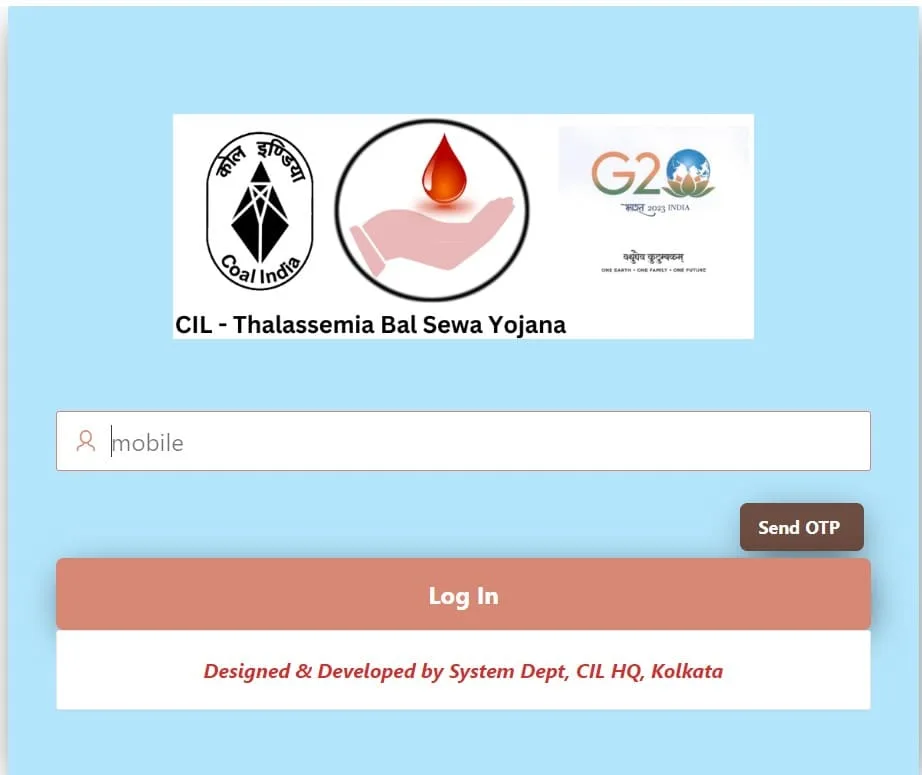
- After clicking on that, you have to enter your mobile number and an OTP will be given to you on your registered mobile number.
- Following that, you will be able to fill in the application form.
- This is how you can submit the application form.
Thalassemia Bal Sewa Yojana FAQs
What is Thalassemia Bal Sewa Yojana?
Thalassemia Bal Sewa Yojana is a Coal India Initiative for the people suffering from Thalassemia and Aplastic Anaemia. Under this scheme, eligible patients will get financial assistance of up to 10 lakh rupees.
How many hospitals are empaneled under this scheme?
Under this scheme, 10 hospitals are empaneled which are mostly in Mumbai, Lucknow, and other major places.
What is the income limit for the patients under the Thalassemia Bal Sewa Yojana?
The maximum income limit for the patients applying for Thalassemia Bal Sewa Yojana is 5 to 8 lakh rupees per annum.
References/ Sources:
